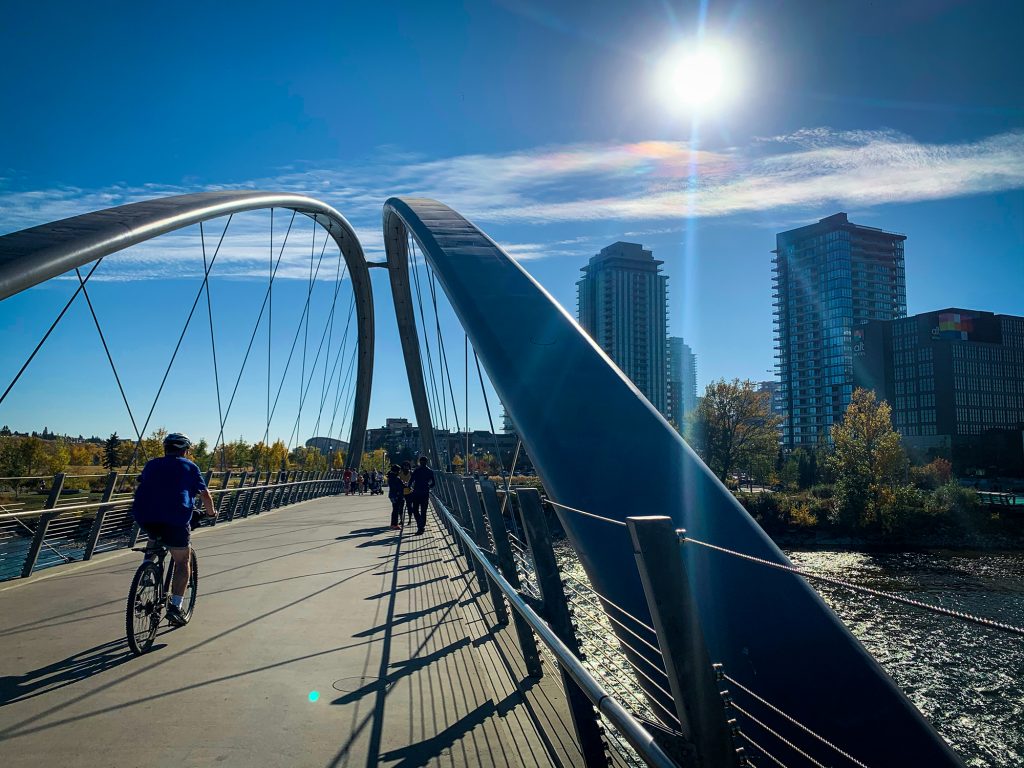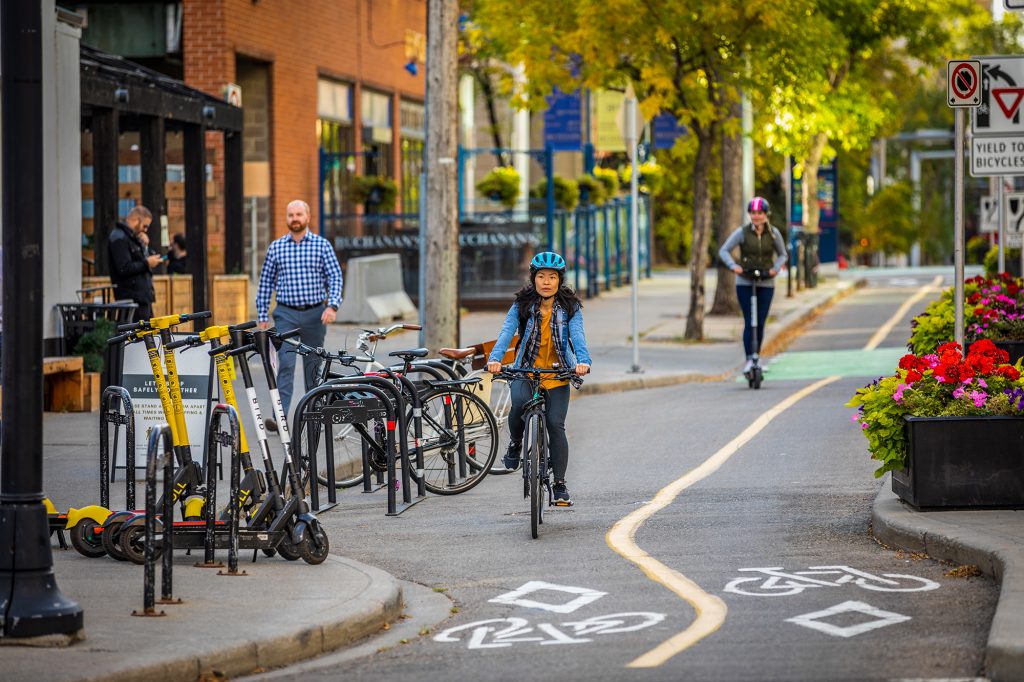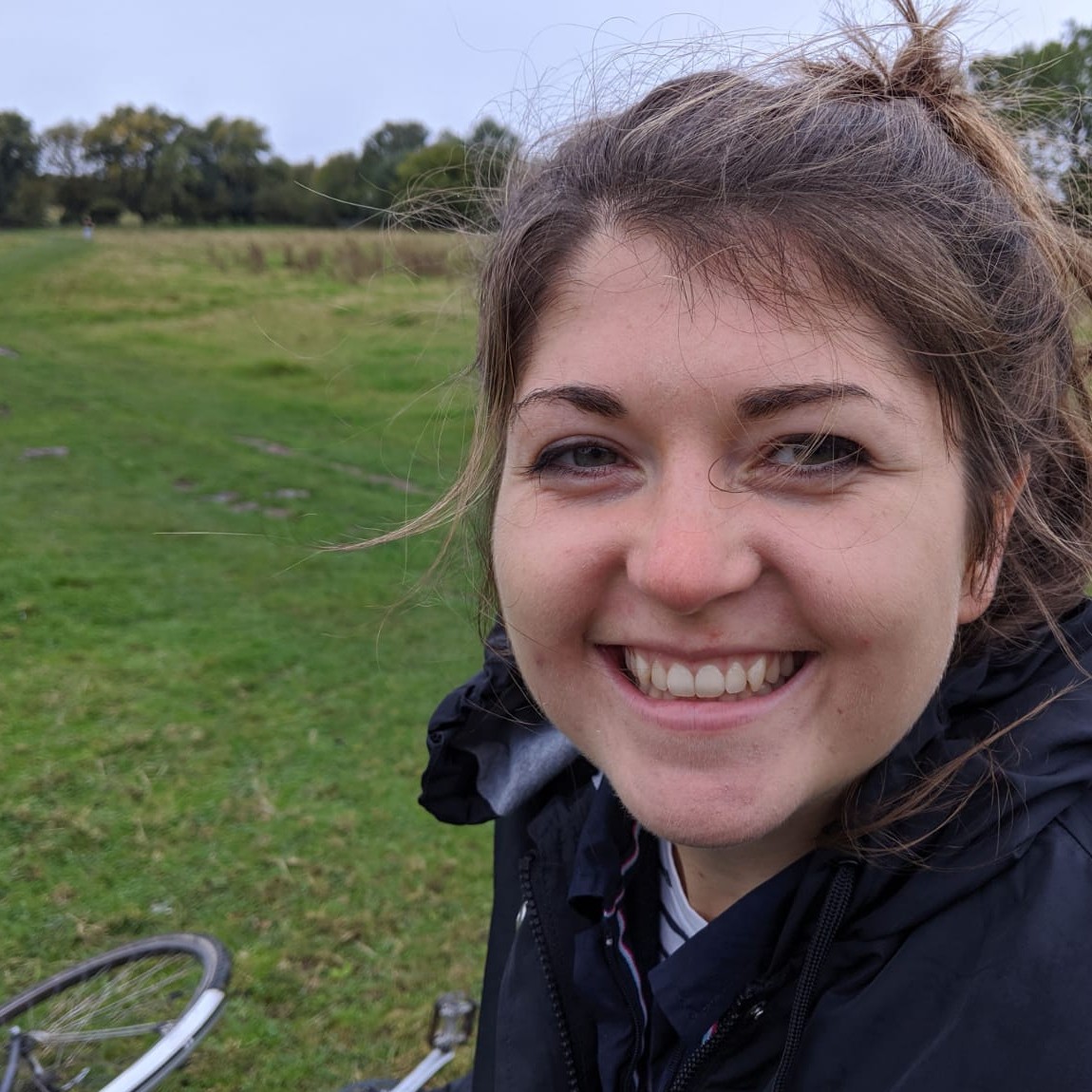Calgary went from less than a 2% cycling modal share, to the ‘Calgary Approach’ being adopted by other cities. Speaking to the campaign group, Bike Calgary, we learned how it happened and what advice they have for other cycling advocates.
Calgary’s Cycling Story: “We Were Running Cycle Tracks Like a Nominee for Election”
Ten years ago, very few Calgarians were cycling downtown – only 1.9 percent. With cold winters, no biking infrastructure and a sprawling cityscape, the bicycle could not compete with the comforts of the car.
“Using a bike on the city streets was not without its trials,” explains Stewart Midwinter, co-founder of Bike Calgary, “the common perception of anyone riding their bike in winter was of a crazy person.”
That started to change in 2011, when Calgary’s council adopted a comprehensive cycling plan. This saw the first permanent and protected bike track laid downtown in 2013. Its opening coincided with heavy flooding, which halted all forms of vehicle traffic. “It was serendipitous in the worse kind of way,” says Kimberley Nelson, former president of Bike Calgary, “it meant people started to realise that cycling was a legitimate means of transport, and in some cases, the only.”
Despite the initial popularity of the cycle track, the plan to continuing building was scuppered by a new council election in 2014. “We had a couple of councillors who were vehemently opposed to cycling”, explains Kimberley, “one stunt involved councillors using hand-counters to discredit the city’s electronic counters recording the number of people cycling.”
As a compromise, a pilot scheme for a comprehensive (but temporary) downtown network of bike tracks was proposed. The hope was that resisting councillors would agree to it on a trial basis, with the option of withdrawing it if it failed. “We campaigned like crazy,” Kimberley states, “there were even campaign placards placed in businesses’ windows – we were running cycling tracks like a nominee for election.”

The vote to pass the pilot was extremely tight. “The city spent 14 hours debating this $5 million expenditure – there was a lot of heat in that committee,” recalls Stewart. It was with the slimmest of margins – a 8/7 majority – that the city managed to secure the downtown network.
Made of bollards, the temporary tracks proved an instant success, as shown by Calgary’s daily cycling counters. By 2016, the council agreed to make the network permanent with a 10/4 majority – a testament to how far the city had come.
Today, cycle tracks are integral to the city’s scene with nearly 17,500 daily trips in 2017. Covid-19 measures have seen wider tracks introduced and a whooping 469% increase in bike volume since March 2020. It can confidently be said that the ‘Calgary Approach’ of building all in one go proved successful.
So, how did cycling campaigners managed to secure a whole downtown network? And how do they continue to build on that momentum? Below are the summarised insights from conversations with Bike Calgary, the campaign group who saw the process unfold.
How to Advocate for Cycling Infrastructure
1) Find a Team
“Find a group of dedicated people with a variety of interests and experiences,” recommends Garry Lohuis, Director of Bike Calgary. This will offer support and motivation when advocating, whilst also providing perspectives from different demographics which will make campaigning more inclusive. “There’s great power in community,” states Stewart, “especially when you are a small visible minority.”
2) Don’t Grumble, Do
“Complaining won’t get you anywhere,” says Peter Spearing, Bike Calgary’s President, “instead, provide a mechanism of how”. By presenting the city with a plan, having already consulted and considered the impacts, advocates are more likely to be listened to.
“Do some of the work ahead of time; speak to the community to find out where they would ride to and which roads need to be changed” advises Kimberley. Otherwise, councils are likely to pile up your complaints with all the others.
3) Get the Message Right
When approaching political actors with cycling infrastructure projects, know the audience and understand which message will be best received.

“If you go to a conservative city councillor, saying ‘cycling is good for the environment’ it’s not going to work. The message they want to hear is that cycling grows the economy. By building bike lanes, the city is more liveable, which is necessary in the competitive urban landscape to attract talent, companies, and jobs,” explains Shiv Ruparell, Strategic Lead and Policy Coordinator for Bike Calgary. Compare this to the federal government, however, where the environmental message will be much better received due to the pressures in meeting the Paris Agreement climate targets. Hence, focus should be placed on the benefits of cycling which are most appealing to the political audience.
When approaching residents with cycling infrastructure projects, “use people-centric language rather than modality-centred language,” advices Shiv. “Everyone can relate to people.” Refer to people on wheels, rather than cyclists and “avoid framing the debate as taking space from cars to give to cyclists; it’s about sharing the infrastructure to benefit everyone,” emphases Peter.
4) Deploy Multiple Tactics
In order to secure Calgary’s downtown network in 2014, campaigners had to rely on an array of tactics to convince councillors to back the scheme. A survey showing that majority of Calgarians would cycle if it was safer was an important first tool. “It showed there was a pent-up demand out there,” explains Stewart, “as the old joke goes, it’s difficult to gauge the demand for a bridge by counting the number of swimmers in the river.”
Finding businesses which supported the cycle tracks was also an important strategy. “Presenting the business case was one of the main reasons why we were able to sway some of the undecided councillors,” says Garry.
Blogs were published by Calgary’s businessmen, judges, members of the legislative assembly and chief medical officer who wrote in favour of the bike tracks. Billboards were even placed in windows, like political placards, demonstrating their support for the cycle network. The counters subsequently placed on the cycle tracks have also been important in evidencing the cycling uptake.
Lastly, the strategy to pursue a temporary pilot proved beneficial. “The way that the progressive councillors overcame opposition was to say we are going to run a trial pilot”, explains Stewart, “as those resisting hoped that it would fail.” The opposite turned out to be true, so the risky tactic was worthwhile.
Hence, advocates should be willing to rely on a range of tools and strategies to secure their infrastructure changes.
5) Know the Limits of Comparisons
“It’s one of our biggest impediments,” states Garry, “the area of Calgary is 825km2 with a population of 1.3 million people; we are probably one of the least densely populated cities in the world.” A huge amount of infrastructure is therefore needed to connect people from suburbs to centre over long distances. This means that copying cycling ideas from dense, traditional European capitals are not necessarily going to be ideal. “Make sure your comparison groups are compatible with your city,” advices Shiv, “otherwise they will not be taken seriously.”
Moreover, the ‘Calgary Approach’ of a pilot downtown network may not necessarily be transferable. For instance, it was important in Seville that the cycling tracks be made permanent to avoid reversal by a subsequent elective. Hence, cycling advocates need to be aware of their characteristics when campaigning for changes.

6) Be Prepared to Evolve
“Advocacy is an evolving, progressive thing”, says Peter, “the process of securing bike tracks laid the foundations for us to take the steps.” Whilst Bike Calgary’s first achievement was securing the downtown network, today’s focus is on creating a mobility network for active transport. Micro-mobility, multimodality, connectivity, e-scooters, e-bikes and catering for walkers, runners and wheeled vehicles are the challenges now.
Hence, Bike Calgary’s advocacy has evolved within the last 20 years dramatically. The group’s youngest active member, Shiv, acknowledges this. “Sweating of the backs of these guys, I’ve grown up in a pretty active bike friendly city.” Compare this with the experiences of co-founder Stewart, where bike users faced “violence or aggression by motorists”, it’s clear how far Calgary has come. Hence, the ability to evolve to the new challenges that arise is crucial for cycling advocates to continue the legacy for the next generations.
How to In a Nutshell…
The downtown cycling network means it is no longer the brave, ‘crazy cyclists’ taking to Calgary’s streets, but a range of people on wheels. Advocating for change requires a team, a plan, a tailored message, multiple tools, knowledge of your city and a willingness to evolve. If Calgary, with -15C winters and 825km2 of space can do it, then so can your city.


